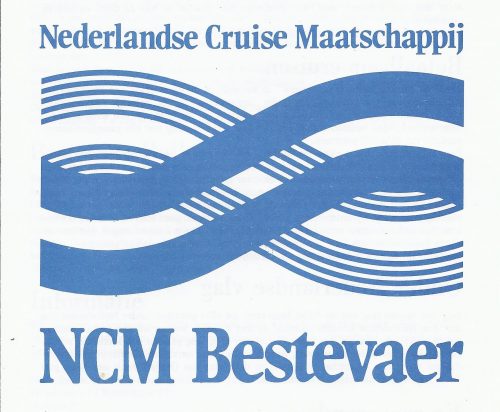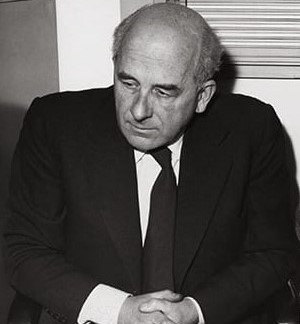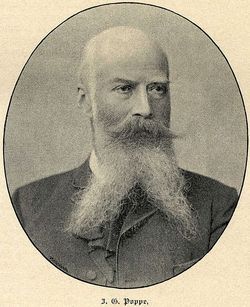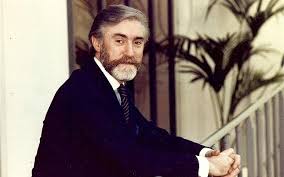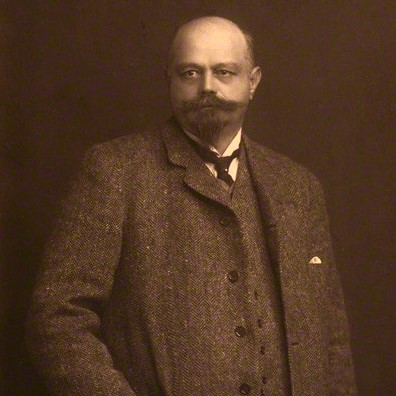When the Holland America Line left Rotterdam to move its offices to the US and decided to change the registry of their ships to New York and Hamilton,, a group of maritime enthusiasts, many of them former HAL employees wanted to found a new cruise line based in Rotterdam. They were led by Joost de Jong, also former HAL.
Many had their doubts if the newly formed founded cruise line had any chance at all to even start up let alone survive in the long run. The company was named Nederlandse Cruise Maatschappij Bestevaer or Dutch Cruise Company Bestevaer, Bestevaer relating to a former Dutch admiral, Michiel de Ruyter (1607-1676) who had always looked well after his men, earning him the nickname bestevaer, best father in old Dutch.

At the start things were looking quite good for the newly formed company.
NCM Bestevaer issued certificates of just 10 dutch guilders (8 euro) which were an instant success, In no time they generated 1.6 million Dutch guilders. And there was the “Club of 1000”, a thousand investors with a hundred 10 guilders certificates. This provided some working capital to start up with. Discounts on future cruises were promised to those having these certificates. Soon, NCM Bestevaer employed over 150. Everything had fallen into place, but apart from its offices in Rotterdam and a contract with the Dutch shipping company van Nievelt-Goudriaan to supply officers, sailors and engine room personnel, a ship was needed urgently to start operations.

Because NCM Bestevar did not have the means to acquire its own ship, the company searched for suitable tonnage which could be chartered. Several vessels were considered, like the luxurious Daphne, a freighter converted in 1975 to a cruise ship and the American Bonaire Star, originally built as Jerusalem for ZIm Lines, Israel in 1957 for transatlantic service and in later life sailed as a cruise ship for several US owners. But both didn’t match NCM Bestevaer’s demands.
The 1956-built Golden Moon, at the time in lay-up in Greece did tick all boxes and soon, a deal was closed with Michael Stroebakis, a former Greek merchant officer who had made his for a fortune by buying older ships and quickly passing them on at a profit, mostly to third world countries in need of freighter tonnage to ship their export products. At the time the Greek shipping scene was thriving, shipping tycoons like Niarchos and Onassis had built empires and Greek shipyards were known for their liner to cruise ship conversions.


Stroebakis had recently bought the 1956-built former Norwegian line Bergensfjord. Sold in 1971 to Compagnie Transatlantique and she was renamed De Grasse. Two years later she was sold again to Thoresen shipping for cruise service out of Singapore, renamed Rasa Sayang meaning Love for Life. During one of her cruises she caught fire and was towed to Singapore for repairs. She didn’t return to active service but was laid up and offered for sale for just 3.5 million dollars. Stroebakis immediately snapped her up. He then offered her to NCM Bestevaer and they agreed to charter her.

She was one of these last classic passenger ships, sturdily built and with interiors with acres of wood paneling. Hans van Hanja was to be her new captain and he was looking forward to his new command. They don’t built them like this anymore, he commented. The Golden Moon, as the Rasa Sayang was now renamed by Stroebakis would depart in May 1979 form Rotterdam on her maiden cruise for NCM Bestevaer. She would be renamed Prins van Oranje, Prince of Orange after the Dutch royal house of Orange. Evening cruises, short trips to the Channel Islands and to Scotland as wel as later in her first season some longer 2-week cruises were planned. However, time and time again her delivery was delayed. Stroebakis just didn’t hold up his end of the bargain. Months later, work on the Golden Moon still hadn’t been finished. NCM Bestevaer even had Stroebakis’ account seized. In the mean time bookings needed to be transferred to other companies because there still was no ship…

In July 1975, NCM Bestevaer went into administration. The 1.6 million the certificates had brought in had been spent. There was a bank loan of 1 million Dutch guilders and the company owed over 1 million to various creditors. At this time the company employed 175 employees and immediately 150 of them were laid-off as there were still operational costs and no vessel to generate income. Shortly thereafter NCM Bestevaer had to completely cease operations, which meant the end of a brave attempt to give Rotterdam a new shipowner with passenger ships homeported in Rotterdam…..
